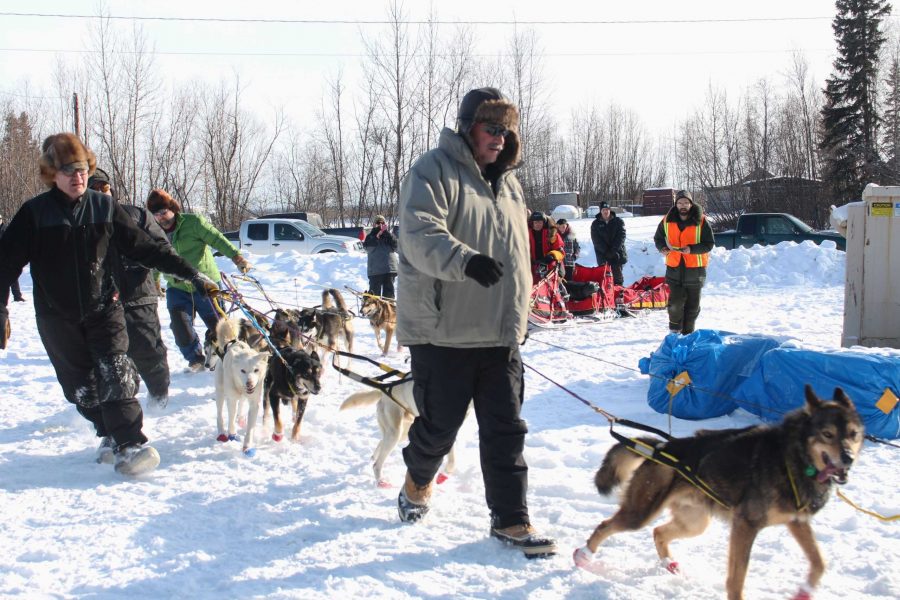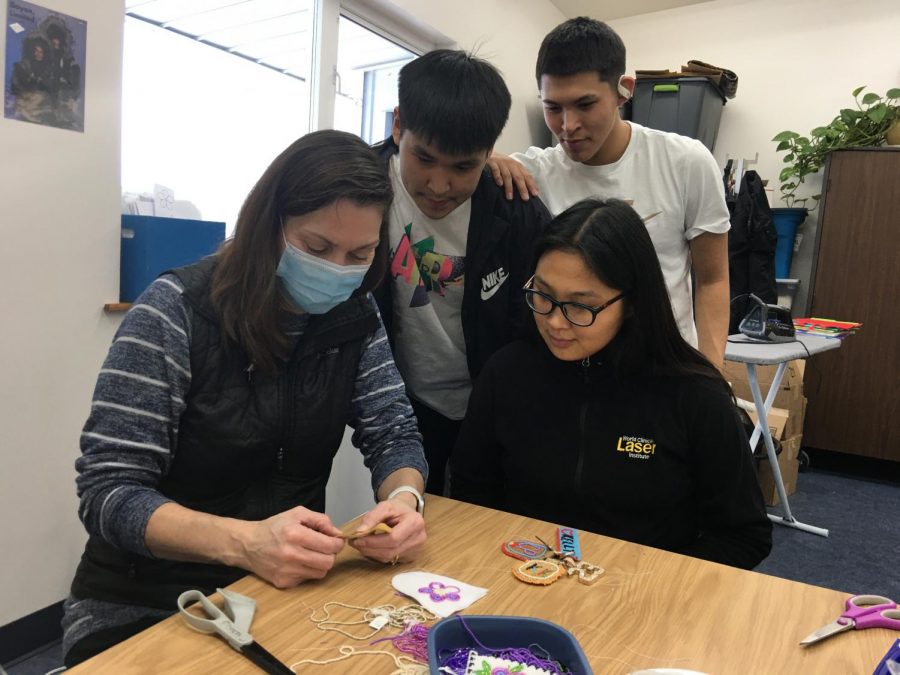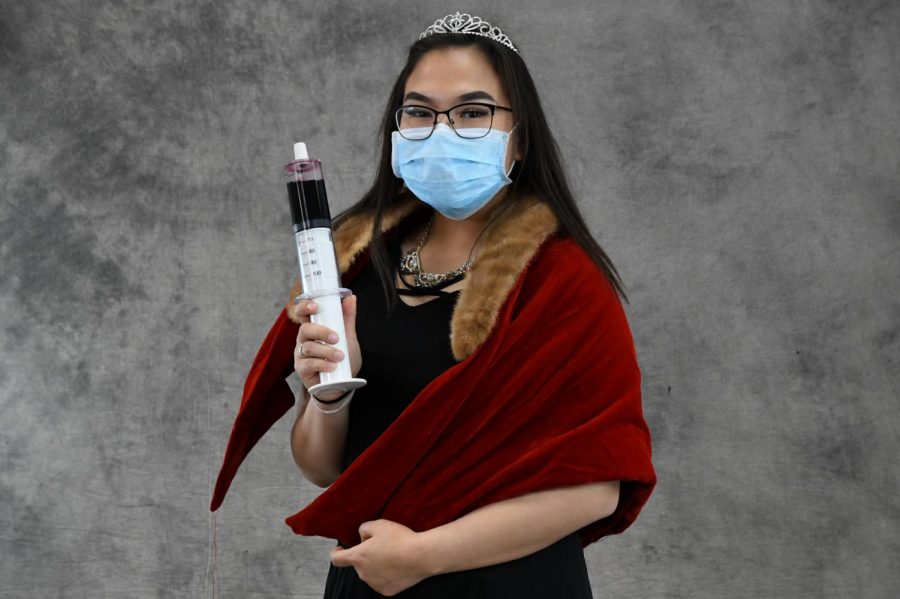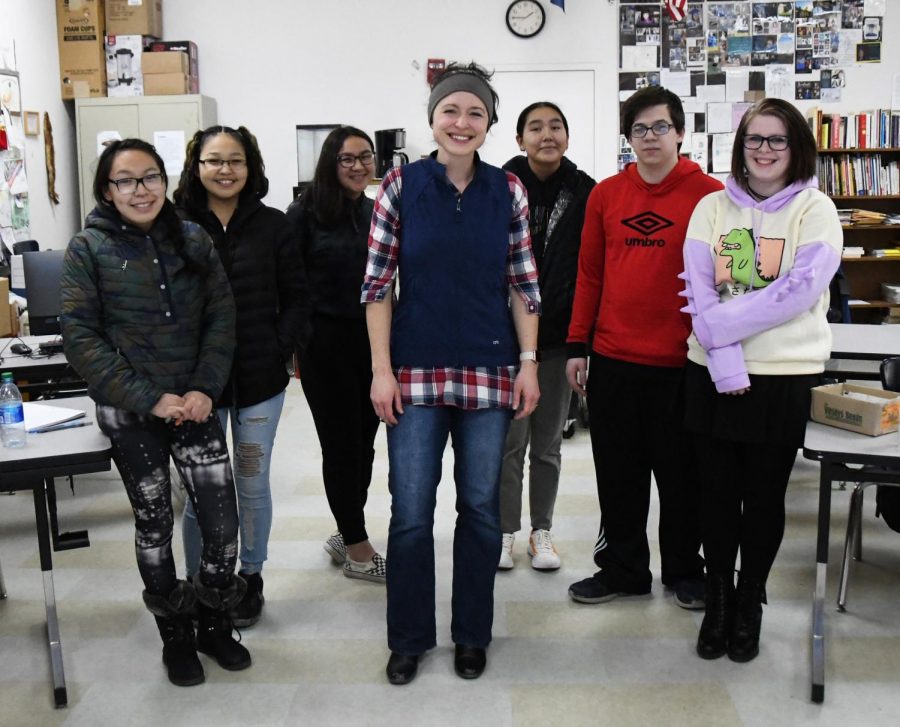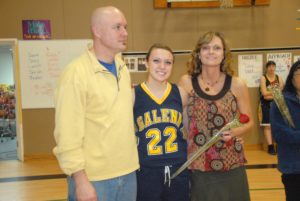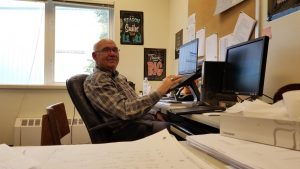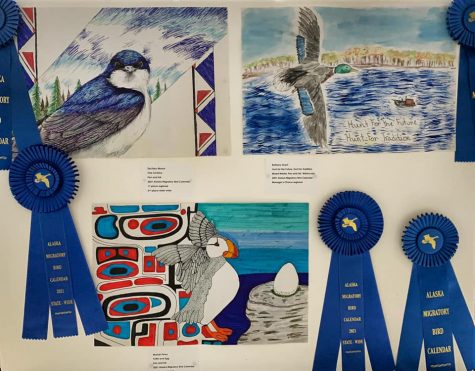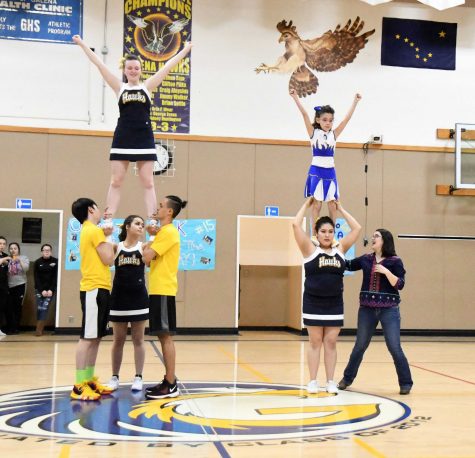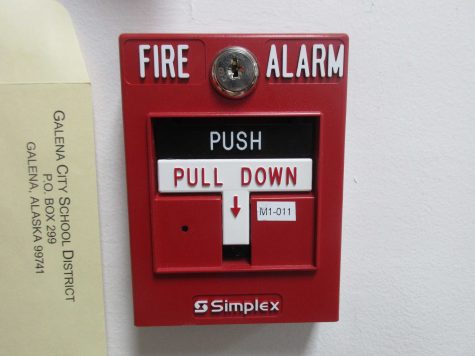The Galena checkpoint: three days of Iditarod frenzy
Iditarod volunteers at the Galena checkpoint move the sled dogs to their resting area on Alexander Lake next to the community hall.
March 25, 2016
Many writers focus on the mushers, the dogs, even the pilots in the famous Iditarod race. When I came to the checkpoint to help, it was full of busy volunteers from around the country. I wanted to know why they chose to take part in the Iditarod, whether they had a history with the race and why they chose to spend their free time helping with the Iditarod.
I approached a friendly gentleman working with the dogs. He was also writing about the people in the race, focusing on the local volunteers. We interviewed each other and both benefitted. It turns he had worked the race five years in a row. Jim Kenyon is a vet for the Iditarod. He lives in Iowa, and typically takes care of small animals, although earlier in his career he did cattle, horses, pigs, llamas, and even a few elephants with a traveling circus. He came to Alaska to visit years ago, saw petunias the size of grapefruits and always wanted to come back. Volunteers get the chance to see and travel in Alaska, which is what attracted Jim to this opportunity. He enjoys interviewing local people and is compiling a book of vignettes.
Behind a table full of computers, wires, papers, coffee and a makeshift kitchen, were several tired, but cheerful workers. One them was Laura Wright, the “Teacher on the Trail” from Austin, Texas. For the past year she has been publishing lessons plans about the Iditarod. The Iditarod air force flies her along the trail, through most of the check points. She stays on the trail throughout the race, writing about the race and the communities. She has been a teacher for 20 years and taught her classes about the Iditarod most of that time. When I was interviewing her, a news bulletin had just come out that a drunk man on a snowmachine drove past Aliy Zirkle and Jeff King’s dog teams, injuring several dogs and killing one. When asked about this incident, she said, “Bad things happen to all of us. Sad things happen to all of us. Aliy and Jeff are still in the race, they are continuing. I think that is kind of amazing. It was a hard situation. I hope that they are a good example to other people. You have to keep moving forward.”
A smart, young woman with bright blond hair was waiting outside for teams to come in. When each arrived she counted the dogs, noted any injuries and took this information to the computer where she typed it in and sent it to Anchorage. Meredith is an experienced Junior Iditarod musher who hopes to run the Iditarod in 2 years. In the meantime, she is volunteering her time, on Spring Break from UAA, as a communication officer for this checkpoint. She is waiting her chance to run the Iditarod herself and therefore may be back in Galena in 2018, but this time on the back of a sled.
The volunteers are essential in making each checkpoint a place where the dogs and mushers can get rested and fed and then off again. The Iditarod relies on volunteers from all over the country, doing different jobs, keeping the mushers going for the next long stretch of trail. After few days of madness and craziness the race moves on and the community hall is suddenly quiet again, until next Iditarod.


